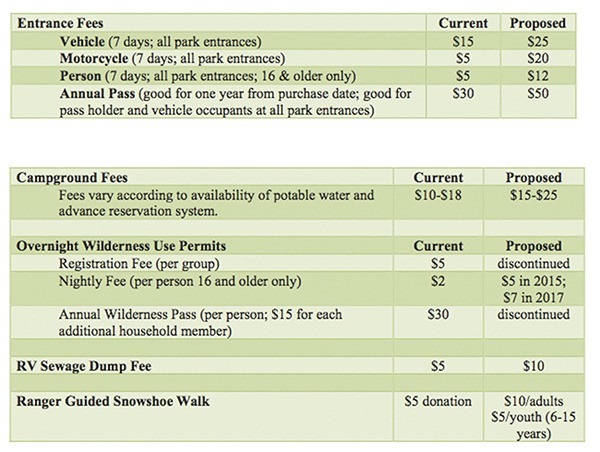With other national parks across the nation, Olympic National Park is inviting public input on possible fee increases proposed for 2015.
With few exceptions, fees across the national parks have not changed since 2006. This is true at Olympic, where current fees have been in place since January 2006.
In August, the National Park Service released an updated entrance fee rate schedule for all NPS units that charge entrance fees. As at Mount Rainier, the entrance fee at Olympic National Park is proposed to increase to $25 for a seven-day vehicle pass.
Other parks including Bryce, Zion and Yosemite National Parks are targeted to charge $30 in 2015 while fees at smaller parks and recreation areas are set at lower rates.
“We are committed to providing all visitors with the best possible experience, while still providing affordable options to enjoy the park,” Olympic National Park Superintendent Sarah Creachbaum said.
“The money from camping and entrance fees is used to improve visitor facilities like water and wastewater systems, campgrounds, roads, trails and visitor centers.”
Fee revenue at Olympic is used to improve visitor facilities and services, from trail and wilderness bridge repair to new visitor center exhibits to operating the park’s wilderness information program.
In 2014, fee funding is providing for new exhibits at the Hoh Visitor Center, accessible parking spaces and walkways at the Hoh and Quinault visitor centers, trail repairs in the Hoh and Sol Duc valleys and south coast route and wilderness information for hikers and backpackers.
To learn more and to provide comment on the proposed fee changes, people may visit the NPS Planning, Environment & Public Comment website, www.parkplanning.nps.gov/OLYMfees.
Additionally, staff members at Olympic National Park have conducted a comparability study of Olympic Peninsula campgrounds. This is done periodically to ensure that park use fees are aligned with area pricing standards.
Based on comparisons with area facilities and opportunities, the park also proposes increased rates for camping, overnight wilderness use and RV sewage dumping.
“While we rely on fee revenue to upgrade and improve park facilities and services, there are also a number of ways for people to receive free entry to Olympic National Park,” said Creachbaum.
Fee revenue at Olympic is used to improve visitor facilities and services, from trail and wilderness bridge repair to new visitor center exhibits to operating the park’s wilderness information program. This year alone, fee money is providing for new exhibits at the Hoh Rain Forest Visitor Center, new accessible parking spaces and pathways at the Hoh and Quinault Rain Forest Ranger Station and much-needed trail repairs in the Sol Duc and Hoh valleys, as well as the south coast route.
Entrance fees apply only to people 16 years of age and older; youth and children 15 years old and younger enter the park for free. Olympic National Park also hosts nine entrance fee-free days throughout the year. More information about these options, along with the Senior, Access and Military passes that provide free entry are available at www.parkplanning.nps.gov/OLYMfees.
Olympic National Park is a major economic engine for the surrounding area. A National Park Service (NPS) report issued in July of this year showed that in 2013, 3,085,340 visitors to Olympic National Park spent $245,894,100 in communities near the park. That spending supported 2,993 jobs in the local area.
This year’s visitation has already exceeded last year’s, with 3,343,749 recreation visits recorded through the end of September 2014. To date, Olympic’s annual visitation is up 28 percent over last year.



